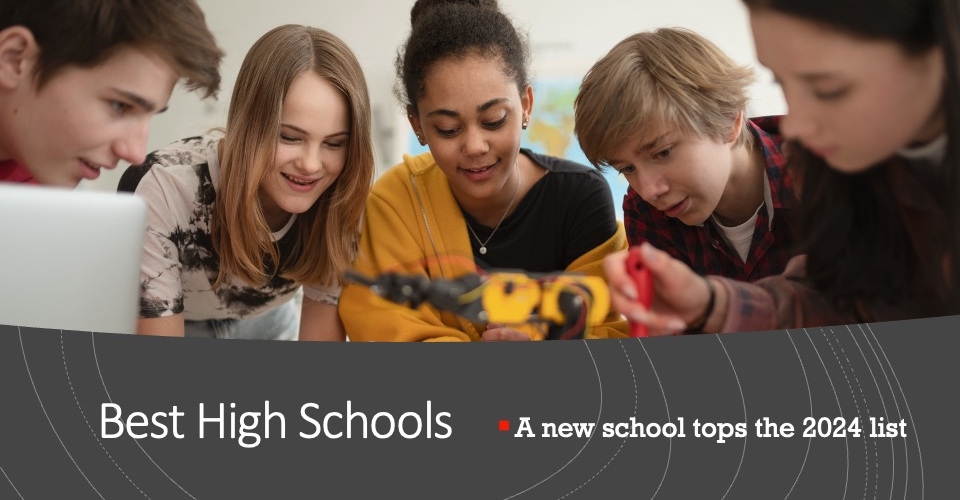Many of us were lucky to witness another solar eclipse in April (wearing protective eyewear of course)! The ‘time horizon’ theme for superintendents and cabinet leaders, offers strategic moves as the school year draws to a close.
As one year comes to a close, another opening is on the horizon. School leaders should be thinking about summer as an eclipse of sorts. Summer bridge programs are winding up and offer invaluable opportunities for high-quality out of school time (OST) learning and enrichment. Yes, summer learning is a great way to combat summer slide and make good use of final ESSER funds, but OST is so much more than just high-dosage tutoring. It’s an excellent way to test approaches to doing school and learn what works best for our communities. Think of OST as a design space or a learning lab where engagement, experiences, and open access programs are tested and understood for import into the “standardized academic year.”
We often refer to systems, culture, instruction and people as we think about strategic work. In terms of systems, OST offers a light-weight venue, with low accountability stakes to improve school. Many school systems re-opened schools in a race to get back to ‘normal’. Normal worked for many, but it isn’t working for all. Plummeting attendance and enrollment rates are evidence that we need to reimagine school. Reimagining our systems for ‘doing school’ doesn’t have to be radical, it can be tested through OST as a staging area for needed changes in the traditional school year.
‘Talking out of School’ podcast: How to improve school safety beyond metal detectors
It’s also a powerful culture piece to signal that we learn all year round. In other words, the school year is ending, but a new one is just beginning and the onramp is through expanded summer learning. The agrarian-based calendars of the past don’t work for us anymore. Learning is an all day every day activity. Superintendents can send a powerful message by visiting these sites and engaging with parents. OST is the best place to meet families because it’s less structured than a bell-to-bell day.
Instruction gets a boost in OST too. Needless to say, summer offers time for support and remediation, but it also makes room for enrichment that makes students want to be on our campuses. Elementary schools can organize important career exploration experiences, having guest speakers from local businesses come and share their world of work. Middle schools can arrange for summer project-based learning where they are solving real-world community issues and challenges. High Schools are an excellent place to host rising 9th grade sessions that connect incoming freshmen to CTE and other career experiences in the field, acting as an internship brokerage house.
On careers, people management gets a boost in OST when we start new teachers during the summer so they can gain practical experiences prior to the big start in the fall. Long-term subs and paras can also test out new skills and benefit from job-embedded training to get talent teams ready for a new school year.
Here are some resources to consider when testing fresh approaches in OST:
- Onboarding new teachers in OST provides a lower-stress alternative to the rush of formal school starts. TNTP offers this guide that reminds us of the value of getting a jump start on relationships, warming novice teachers up for the new year.
- The Wallace Foundation offers a free online OST Cost Calculator that works like a mortgage calculator. It lets you determine the costs of a variety of options for high-quality afterschool programs and the summer portions of year-round programs.
- Measuring OST Data for impact is easier than you might think. OST is free of standardized testing and many state requirements, so it’s ofter overlooked as a viable space for data. Child Trends offers some key considerations on how the summer can be used to create and test much-needed technical assistance for the fall.
As you think about one year ending and another beginning, remember there are many dynamic possibilities that OST offers, it becomes clear that embracing this less structured, exploratory period is not merely a stopgap or a remedy for the “summer slide,” but a vital chapter in the evolving narrative of education. Superintendents and school leaders are provided with a unique laboratory for innovation during the summer months—where new ideas can be tested, and new approaches to learning can be integrated into the traditional school calendar.
This strategic deployment of OST not only bridges the gap between academic years but also redefines what it means to learn in a continuously evolving educational landscape. As this school year concludes, let us carry forward the spirit of innovation and collaboration that OST embodies, ensuring that every student has the opportunity to thrive in a system that learns and grows year-round.









